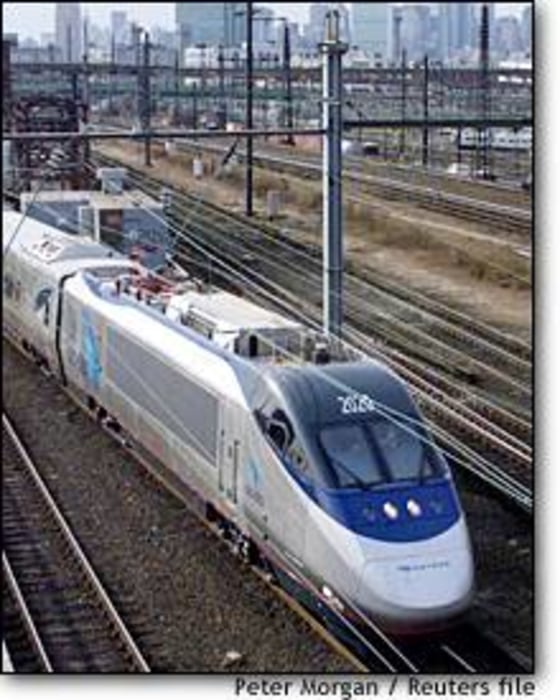The futuristic world of high speed rail: Europe and Japan swear by it while America dreams about it. But Californians who dream of zooming from San Francisco to Los Angeles in just 2 1/2 hours, and Floridians who hope the trip from Orlando to Miami will be similarly bullet-like, face a stark reality. Without significant funding increases from Amtrak or the federal government, fiscally strapped states are finding it difficult to convert such dreams to hard, cold rails.
Outside the east coast, trains don’t garner much in the way of political clout. After all, at a time when many family cars are designed to climb mountains, who wants to be confined to the rails?
In spite of this prejudice, though, plans for high-speed rail corridors are in the works in several regions, prompted by appalling gridlock on the roads and, more recently, the security bottlenecks of the nation’s airports.
Amtrak’s Acela Express, the only high-speed rail service in the country, has enjoyed a successful debut along the heavily traveled Boston-New York-Philadelphia-Baltimore-Washington corridor. Since 2000, it has become a mainstay of business travel, particularly given the unfriendly skies of post-9/11 era.
But considering Amtrak’s shaky financial state and the fact that a recent loan from the Federal Railroad Administration came on terms that prohibits Amtrak from launching new services, the job of converting notional route maps into an actual system has fallen to the states and whatever private entities might care to contribute.
TOUGH TIMES
On paper, high-speed rail appears to be ready to take off. The House Committee on Transportation and Infrastructure authorized $60 billion for high-speed rail development in June, a rare success for rail development in America.
But Ernest Istook Jr., chairman of the Appropriations Committee panel that would have to authorize those funds, cautions that in a time of record federal deficits, the support for expensive right-of-way purchases and construction projects is going to be thin. “You always have a lot more authorized than you have money for,” he says. In plain English: that $60 billion may never get out of committee.
The lack of federal funding hasn’t stopped some states from moving forward with high-speed rail initiatives. California and Florida are both in the preliminary stages of planning high-speed rail corridors, planned so far with almost sole state funding. Private initiatives and public initiatives in the Pacific Northwest and along the Mississippi River corridor, centered in Chicago, also are actively pursing rail lines.
California has used $20 million of its own to fund the first stage of environmental clearance for the high speed rail plans in the state and officials say they expect to have specific routes chosen by the end of the year.
In Florida, voters passed an initiative making the creation of a high-speed rail corridor a constitutional amendment in 2000. Although Gov. Jeb Bush has strong reservations about the investment that would be involved, high-speed rail officials say it is necessary to continue with the planning.
Nazih Haddad, executive director for the Florida High Speed Rail Authority, says that despite the problems Amtrak is facing, high-speed rail can succeed.
“Once you build them, people flock to them,” Haddad says. “It’s something we really need in the growing state of Florida. And it’s something the people have spoken on.”
